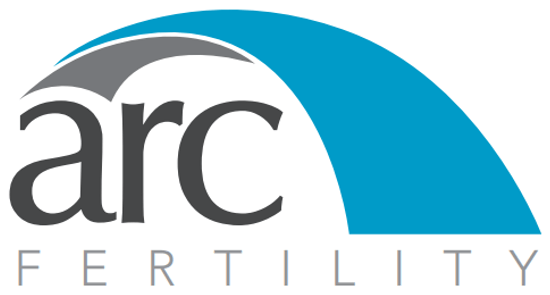30 to 40% of infertile women have problems with ovulation. An egg has to be released from the ovary each month in the middle of the cycle to have the opportunity to be fertilized in the tube and subsequently implant in the uterus to develop into a pregnancy. Ovulation can be induced by a variety of different medications. Your physician will discuss which treatment regime is right for you.
Candidates for Ovulation Induction
Many women are candidates for ovulation induction treatment. Women who ovulate infrequently or who do not ovulate at all are most benefitted by undergoing ovulation induction through different fertility drugs or ovulation induction medications depending upon their exact etiology for having ovulation difficulty. Women with unexplained infertility who ovulate regularly can also be treated with ovulation induction to increase the number of ovulations per cycle to give them better odds in achieving a conception. Ovulation Induction is also used for patients undergoing an IVF cycle to maximize the egg production. The probabilities of complications such as the Ovarian Hyperstimulation Syndrome (OHSS) (see section on OHSS) are minimized when patients are monitored carefully, but can still occur.
Clomiphene Citrate
Clomiphene Citrate, also known as Clomid and Serophene, is usually given orally for 5 days of a cycle starting with a 50 or 100mg/day. If ovulation fails to occur, the dose of clomiphene citrate can be increased by 50 mg more. The FDA has approved this medication for ovulation induction treatment up to 150 mg for 5 days. Clomiphene Citrate works by “tricking” the body in thinking that the women does not have enough estrogens. The pituitary gland at the base of the brain sends signals [hormones called Follicle stimulating Hormone (FSH) and Luteinizing Hormone (LH) ] to the ovary to stimulate follicle development and egg maturation after getting impulses from higher centers in the brain. A few days after the clomiphene citrate has been stopped the patient will have an LH surge which will lead to ovulation 36 hours after the surge has started. Some patients are benefitted with ultrasound and hormonal monitoring so that the ovulation is not missed and plans for intrauterine insemination (IUI) or vaginal intercourse can be made. An HCG injection can also be given in a cycle of clomiphene citrate to better time ovulation as it will predictably mimic the LH surge.
The chance of success with clomiphene citrate depends on many factors, such as the age of the patient, associated fertility problems, and semen parameters. If a pregnancy is achieved the chance of twins is 6-10% and the chance a triplet gestation or higher order pregnancy is 1% or lower.
Immediate side effects of clomiphene citrate are uncommon but can include hot flushes, mood changes, and rarely blurred vision.
Letrozole
Letrozole, also known as Femara, is another oral agent that can be used for ovulation induction. This medication has not been approved by the FDA for ovulation induction treatment. Multiple studies have shown that women who have the same indications as for ovulation induction with clomid can also use letrozole as an alternative. A few head to head trials of clomiphene citrate and letrozole have shown similar results so far. Women who have side effects with clomiphene citrate can consider letrozole as an alternative. It is taken for 5 days early in the cycle. The starting dose is 2.5 or 5.0 mg. If ovulation does not occur the dose can be raised 2.5 mg in a subsequent cycle. Most practitioners do not exceed 7.5 mg per day.
Gonadotropins
The gonadotropins, also called Repronex, Bravelle, Menopur, Gonal F, or Follistim are injectable fertility medications that can be used for ovulation induction treatment. Daily injections are taken for 5-12 days. Nearly all patients have overcome their fear of injecting themselves once they learn how easy it is. These injections allow eggs within follicles to mature. The starting dose varies from patient to patient in order to optimize the likelihood of conceiving while reducing the risk of multiple births and OHSS. The patient is monitored very carefully with ultrasounds and hormonal evaluation to adjust dosing. Ovulation can then be implemented with an HCG injection which mimics the physiologic midcycle LH surge. These same medications are often used for patients undergoing IVF cycles to produce a larger number of mature follicles. The success rate depends upon multiple individual factors. If a patient achieves pregnancy with ovulation induction with gonadotropins and IUI, the chances of twins are approximately 15%, triplets are 5%, and there is a 1% chance of greater than triplets.
Gonadotropin Releasing Hormone (GnRH) Analogs
GnRH analogs, also called Lupron, Leuprolide Acetate, Ganirelix, Antagon, or Cetrotide, are synthetic hormones similar to GnRH. GnRH is released by the hypothalamus in the brain to control the pituitary gland. Normally a pulsatile release of GnRH stimulates the pituitary to secrete FSH and LH, the hormones needed to cause egg production and subsequent ovulation. When a synthetic GnRH analog is given, the opposite effect occurs. Lupron causes an initial increase in FSH and LH and the subsequent suppression of these hormones. Antagon and Cetrotide cause immediate suppression. The use of GnRH analogs in conjunction with gonadotropins allows for better hormonal control of ovulation induction and fewer canceled cycles. In IVF cycles, GnRH analogs are often used to enhance egg production and to prevent spontaneous ovulation. The use of these medications has significantly lowered the cancellation rate for all assisted reproduction cycles by at least 75%. The GnRH analogs can sometimes be also used for patients undergoing non IVF ovulation induction cycles.
Human Chorionic Gonadotropin (HCG)
HCG, also called Novarel, Profasi, or Ovidrel, is used to induce ovulation customarily when there are an adequate number of mature follicles respectively per treatment regime. It can be used in lieu of waiting for a spontaneous LH surge because it is fairly easy to use and sexual relations, IUI, and egg retrieval can be timed accordingly. LH and HCG bind to the same receptor. The HCG is used because it has a longer half life than LH.
Wayne State University Physician Group
26400 West Twelve Mile Road, Suite 140
Southfield, MI 48034
Ph: 248-352-8200
©Copyright Wayne State University Physician Group

